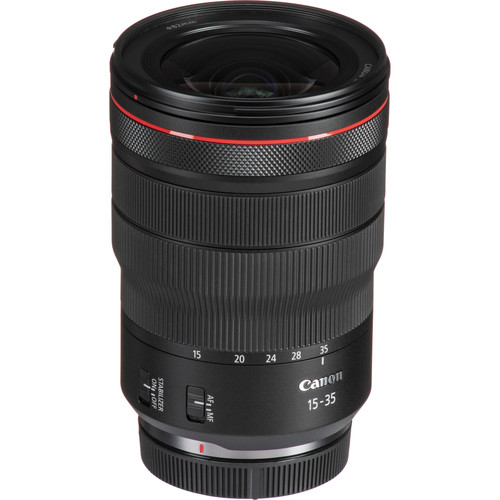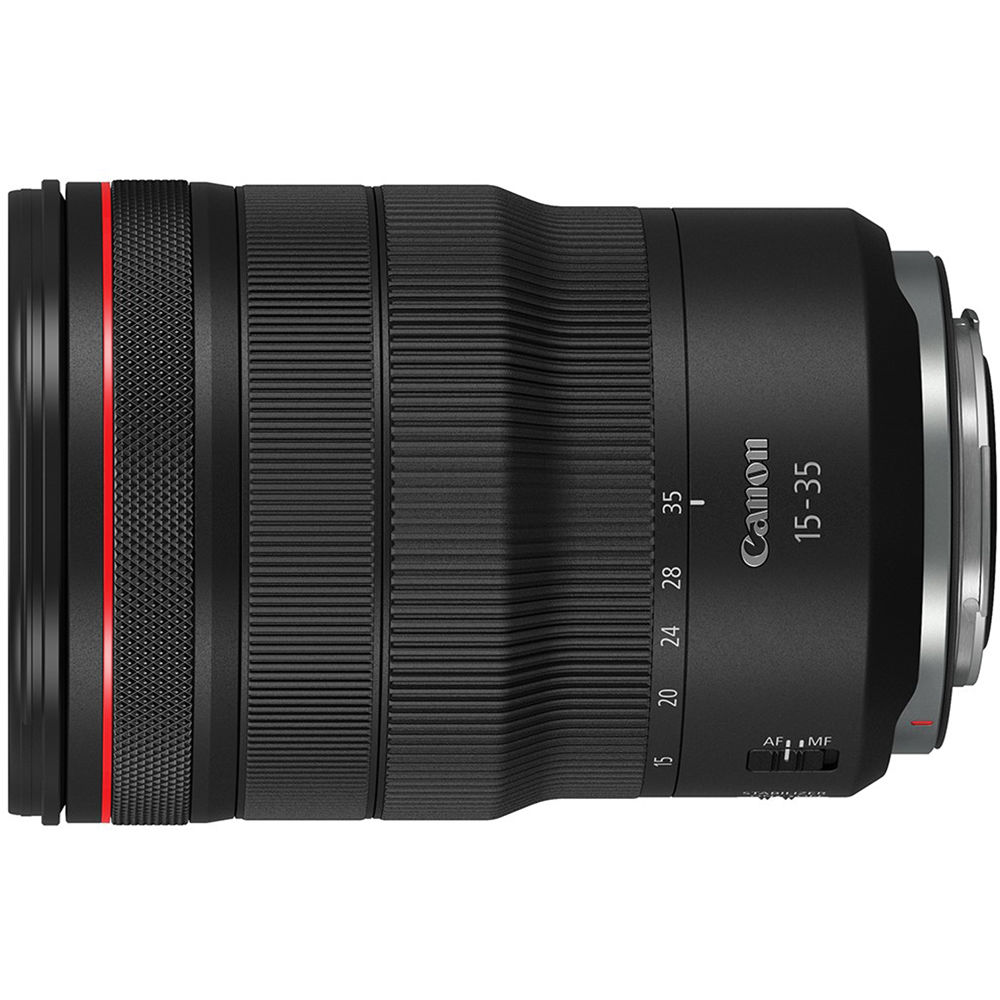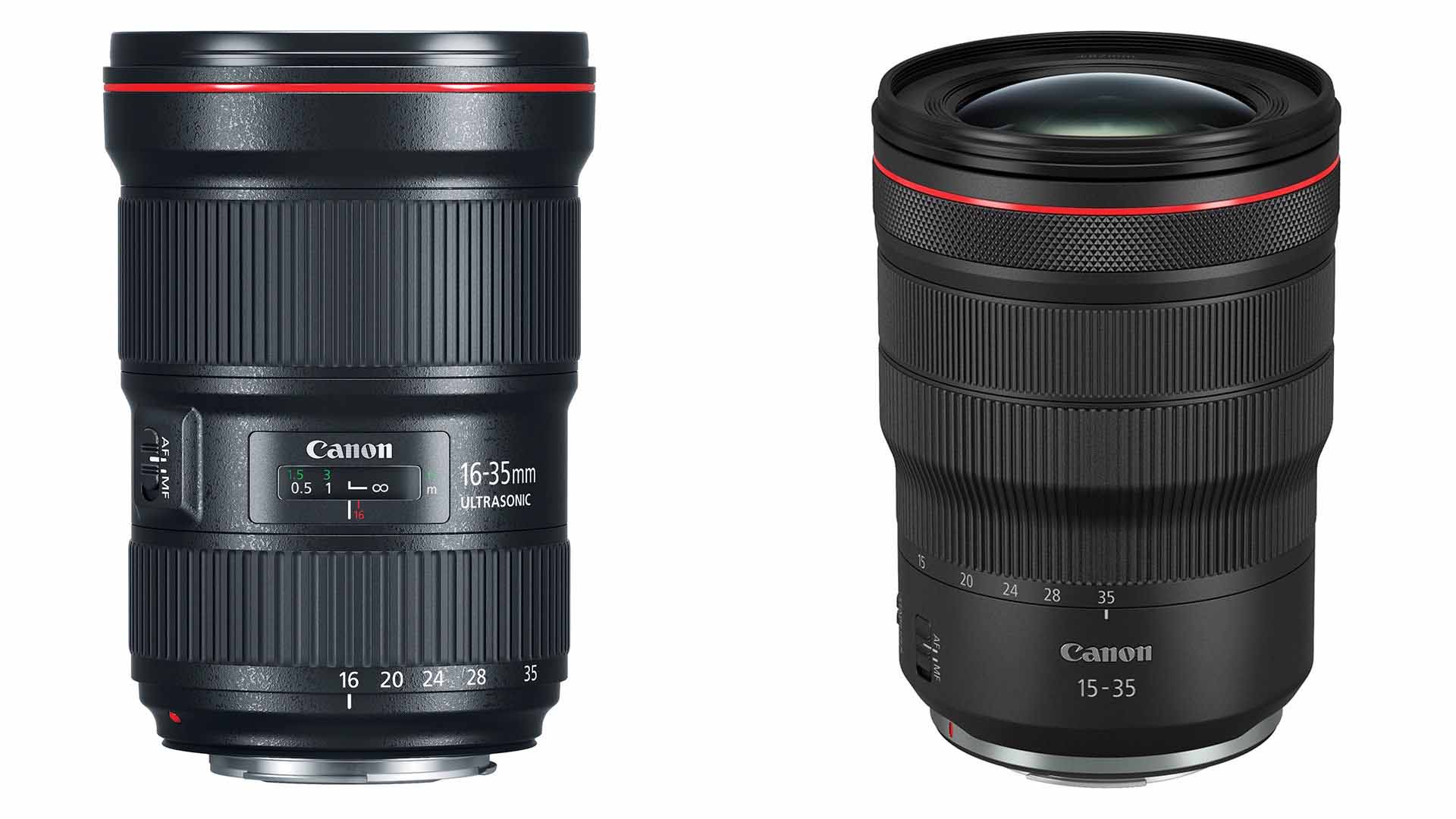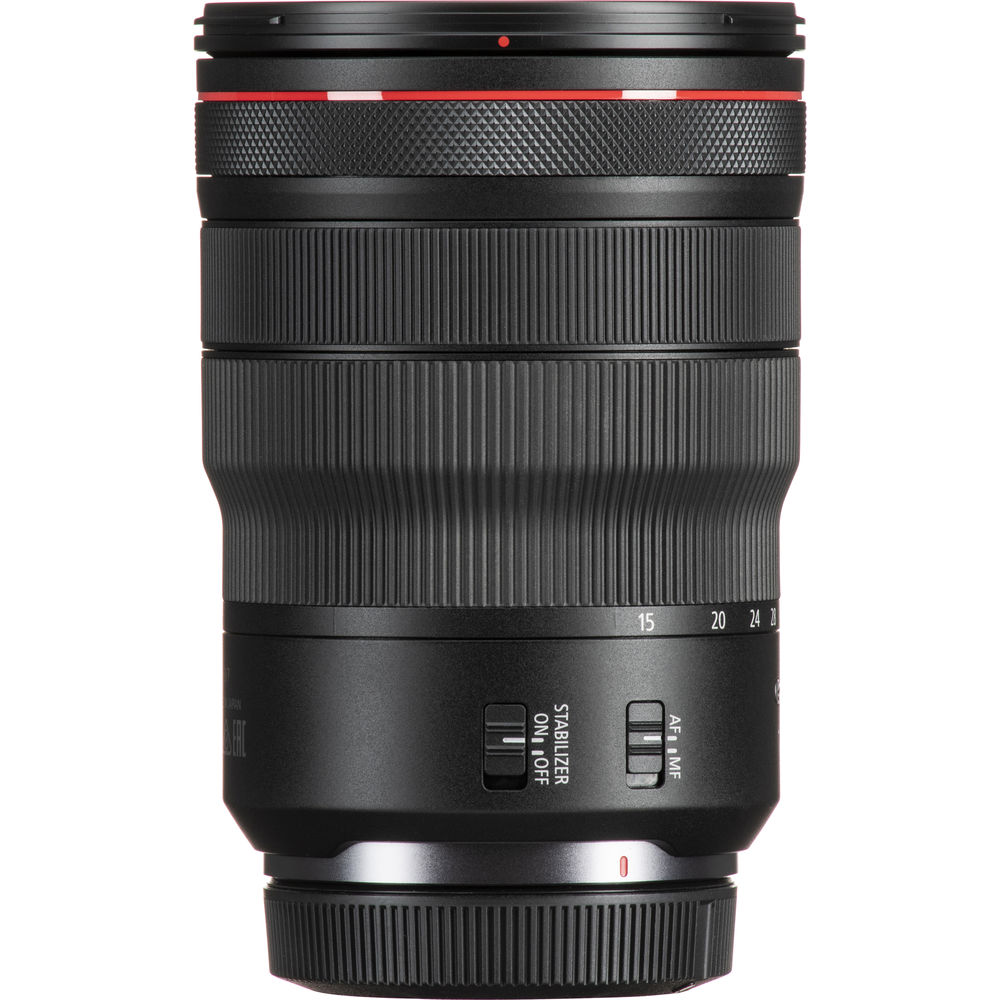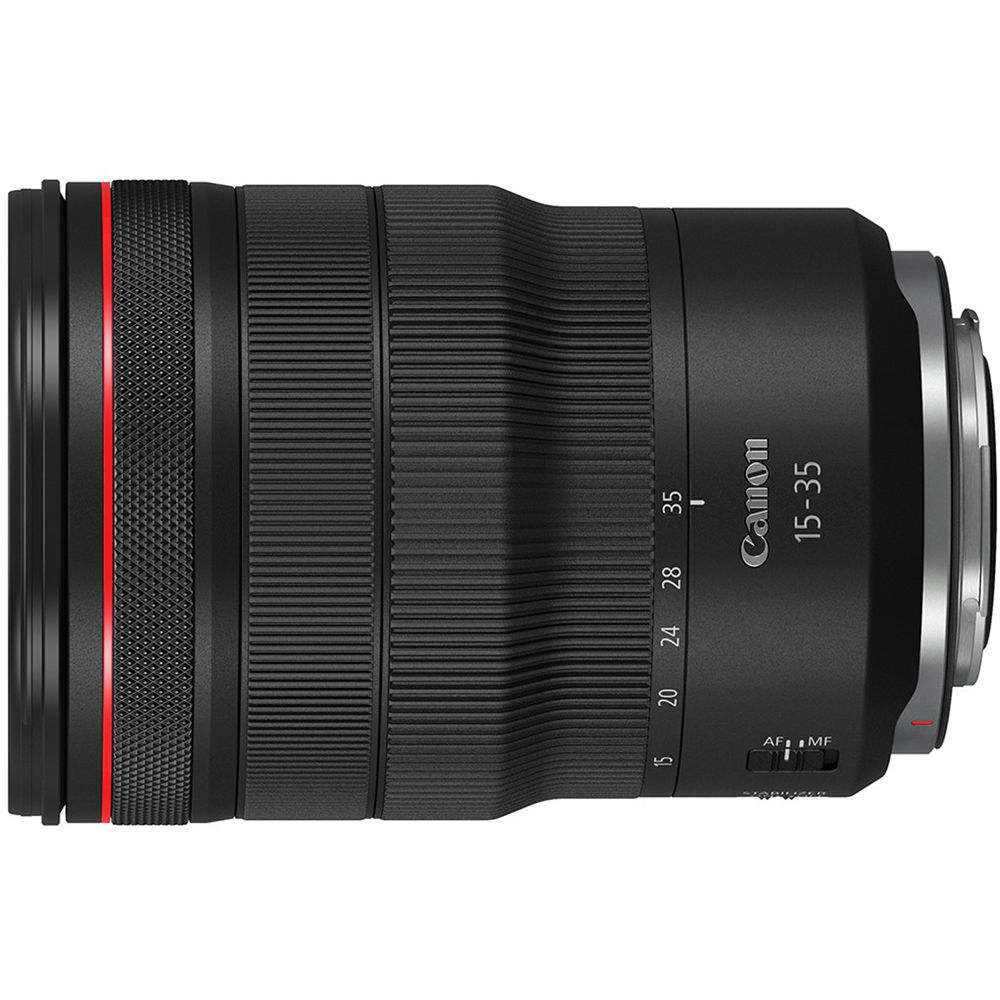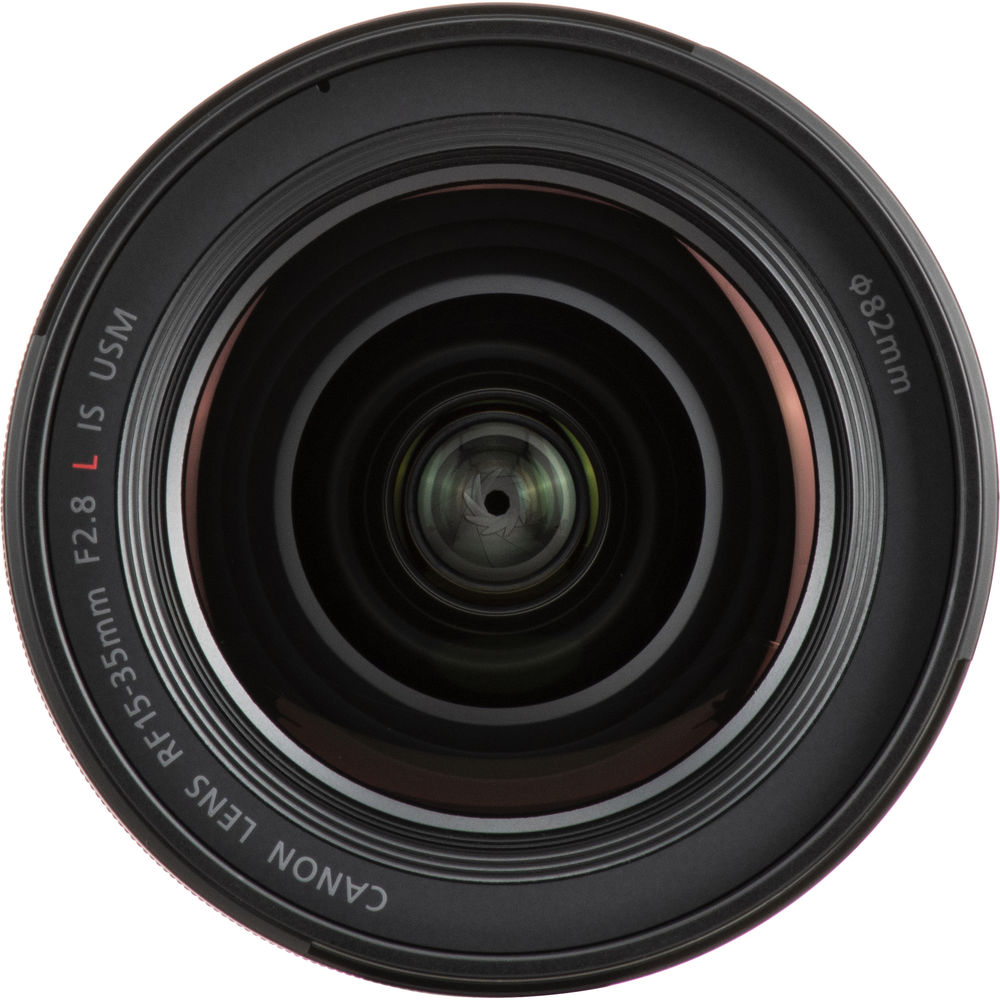The Canon RF 15-35mm f/2.8L IS USM (Amazon, B&H) is primarily a photography lens, though it will be used for video. Canon. has gone one step further and upgraded the popular EF 16-35mm f/2.8L. Is it worth it?
In this article let’s take a comprehensive look at the important features and specifications of the Canon RF 15-35mm f/2.8L IS USM lens and see how good it will perform specifically for video, cinematography and filmmaking.
The aim of this article is to provide you with enough information and perspective so you can decide for yourself whether this lens is right for your film or video.
Important: This article is a comprehensive overview of the lens with available information; and an analysis based on our experience shooting for almost two decades. It is not a hands-on review. If and when we get hold of the lens we’ll be sure to publish a detailed review. If this is not your cup of tea you can stop reading.
Click to what you want quickly:
- TLDR;
- EF vs RF:
- Features:
- Control:
- Basics:
- Alternatives to the RF 15-35mm f/2.8L IS USM
TLDR;
What you need to know for video work about the Canon RF 15-35mm f/2.8L IS USM (Amazon, B&H):
- The Canon RF 15-35mm f/2.8L IS USM is a great and versatile wide angle zoom lens. Very useful focal range that is in a class of its own.
- The constant f/2.8 aperture is great for video work.
- Focus ring can be changed to fly-by-wire for follow focus work.
- Control ring can be de-clicked for a small fee at a Canon service center for aperture transitions.
- The lens has Image Stabilization, and you will get even better stabilization with a Canon R camera (R5, R6, etc.) that has IBIS.
- Great for dual pixel autofocus for video.
- It is not a parfocal lens.
- It exhibits breathing.
Can be great for the following types of filmmaking:
- Wedding filmmaking
- Documentary filmmaking
- Journalism
- Low budget music videos
- Long events, seminars, religious ceremonies, etc.
- Gimbal use
- Drone use
EF vs RF: What’s the difference?
Difference between the RF and EF mount
Both are lens mounts specific to Canon. Let’s take a look at some important distinctions.
Flange focal distance
The RF is a new lens mount, with a smaller flange focal distance.
Here’s how the flange focal distance compares:
| Mount | Flange Focal Distance |
|---|---|
| RF | 20mm |
| EF | 44mm |
EF lenses were designed for DSLRs. Now with the mirror gone, that’s space and weight savings. However, that’s not the only advantage.
Canon (and every one else) maintains the smaller flange focal distance allows for larger apertures (for some focal lengths), better corner to corner sharpness and reduced light fall off.
Ergonomics
RF lenses are supposed to be lighter, making them easier to handle for photography, but slightly problematic for video. Weight gives better stability and smoother movement for most use cases. For gimbal, drone and steadicam use, the lower weight is an advantage because a lighter lens puts less strain on motors, and the human arms that have to hold it up.
The RF mount is equipped with 12 communicator pins compared to 8 pin connection of the EF mount. Canon claims this contributes towards quicker autofocus, better AF tracking and improved image stabilization.
Canon has redesigned the focus actuators for a hassle-free filming. They claim the new Nano USM and Dual Nano USM have been designed for video. Canon claims that the introduction of these actuators in RF lenses will result in a quieter and quicker autofocus.
The last major change is in the optics. Canon have redesigned the optics from the ground up to account for the smaller flange focal distance. This one simple change considerably changes the optical characteristics and challenges.
Naturally the prices of RF lenses match the high quality Canon have put into this series! The assurance is, the quality isn’t compromised, and with proper care Canon RF lenses should last for years. Let’s compare the EF version of the 15-35mm with its newer RF counterpart.
EF 16–35mm f/2.8L III USM vs RF 15-35mm f/2.8L IS USM
| Lens | RF 15-35mm f/2.8 | EF 16–35mm f/2.8 III |
| Filter thread | 82mm | 82mm |
| Size | 88.5 x 126.8 mm | 88.5 x 127.5mm |
| Weight | 840g | 790g |
| Lens Control | Ring control | none |
| Image stabilization | 5 stops* | none |
| Aperture Blades | 9 blades | 9 blades |
| Max. Aperture | f/2.8 | f/2.8 |
| Min. Aperture | f/22 | f/22 |
| Angle of View (Diagonal) | 110° 30′ – 63° | 108°10′ – 63° |
The RF 15-35mm f/2.8 IS USM (Amazon, B&H) is heavier by about 50 grams. While that might seem like a disadvantage here’s what you get for that extra 50 grams:
- Wider angle and field of view
- Image stabilization!
If you’re planning on using the Canon EF 16-35mm f/2.8L USM (Amazon, B&H) on a Canon R body the adapter will add weight anyway.
Canon claims that RF has smoother, quieter autofocus. In any case the autofocus for video will be better with RF. lenses on an R body.
RF lenses come with a special customizable control ring this can be customized to change exposure on the go. This is only available on cameras that natively have an RF mount.
Features
Coverage
The Canon RF 15-35mm f/2.8L IS USM (Amazon, B&H) is a full frame lens. It is designed to completely cover a sensor the size of 36mm x 24mm.
If you are considering this lens for an APS-C sensor or other cinema camera, check out this article:
Focal Range
The minimum focal length is 15mm. This is considered wide on a full frame 35mm sensor.
The maximum focal length is 35mm. This is considered mid range on a full frame 35mm sensor.
This focal range is very useful. It means you can cover an event in a small room with the wide end. It’s also great for landscapes, architecture, music videos, etc. This is why this focal range is popular, and Canon has given it the “L” moniker.
It does come with its set of compromises. Even though Canon have gone wider with a 15mm at the widest end, the field of view is “only” 110° 30′. The 14mm on the legendary Nikon 14-24mm f/2.8G (Amazon, B&H) goes as much as 114°!
The higher price of the RF 24-105 f/4L IS USM (Amazon, B&H) should be an indicator of where it sits in the RF pantheon. It is one of the holy zoom trifecta. There is no real alternative.
Aperture
The maximum aperture is f/2.8 and the minimum aperture is f/22.
Having a constant aperture is a great option for video and cinematography. Imagine you’re covering a scene or event where the light doesn’t change. You can move quickly from wide to telephoto at a fixed aperture and not have to worry about compensating for exposure.
The Canon RF 15-35mm f/2.8L IS USM (Amazon, B&H) has 9 rounded diaphragm blades. This ensures a smooth bokeh (Canon knows what they are doing!). However, if you want more blades, you might want to take a look at the Canon Sumire primes.
Resolution
Here’s the official MTF chart:
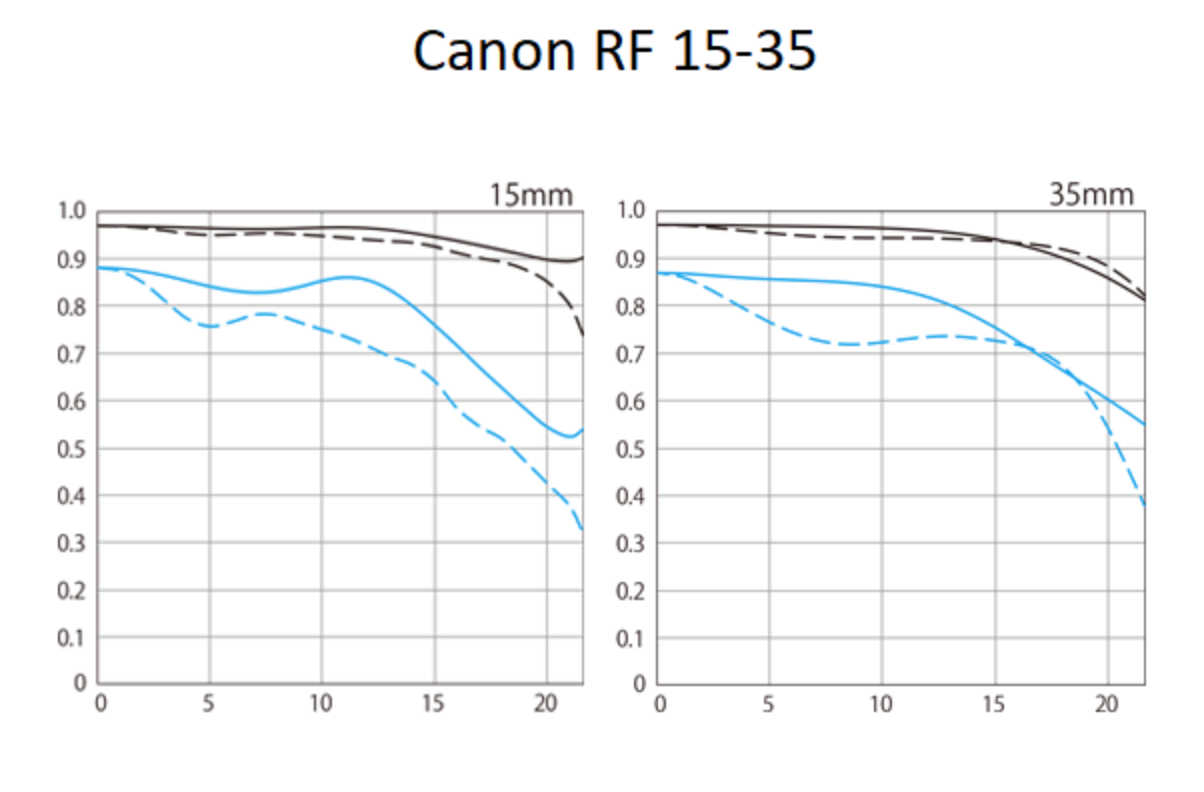
The Canon RF 15-35mm f/2.8L IS USM does better optically when it is at 35mm. But not by much! That’s a surprising aspect of this new lens. It’s almost equally sharp at either zoom end. The 15mm falls off faster, as is expected of ultra wide angle lenses.
With the variance in the Sagittal and Tangential lines, you can infer (somewhat) that the bokeh should be smooth, though at this aperture it might not make a big difference to your work.
I think most professionals will be quite happy with the optical quality of the RF 15-35mm f/2.8L.
If you are curious and want to read the MTF chart for yourself. Here’s a guide on how to read them easily.
Close Focus Distance
The closest focusing distance is 0.28 meters or 0.92 feet. I believe it stays consistent throughout the focal range. This is real handy for close up work, and is on expected lines for wide angle lenses.
No complaints.
Image Stabilization
Canon claims that the RF 15-35mm f/2.8L IS USM (Amazon, B&H) lens has up to 5 stops of Image stabilization (IS).
5 stops? 8 stops? What are these stops?
How do you calculate Image Stabilization? Check this out:
Pairing the 5-axis IBIS-equipped Canon EOS R5 or Canon EOS R6 with an IS-equipped lens can deliver 8-stops of combined IS. This can be toggled on and off if you choose so.
It’s obvious the best stabilization is realized when an RF lens with IS is combined with an R-body camera with IBIS. E.g., the RF 15-35mm f/2.8L will be more stabilized on a Canon EOS R5 over a Red Komodo (which also has an RF mount).
Is it Parfocal?
The Canon Canon RF 15-35mm f/2.8L IS USM is not a parfocal lens. To know what a parfocal lens is, check this out:
Control
Manual focus system
By default the Canon RF 15-35mm f/2.8L IS USM (Amazon, B&H) is set to ‘fly by wire’.
Even though the Canon RF focus ring is technically a ‘focus by wire’ system, the RF lenses are the first line of lenses in the world which have enabled turning focus by wire off.
What is the meaning of focus by wire and fly by wire?
Focus by wire: Let’s say you turn the focus ring to change focus from point A to B. You’d expect the focus to shift accordingly. When you stop point B will be in focus. Now bring the focus point back to A and try again, but at a different speed. Slower or faster, doesn’t matter. Now, even if you precisely rotate to the exact same degree, the focus will not be on point B! The speed of rotation determines which point it is focused on. That’s just completely useless for follow focus work. If an actor or person moves at a different speed, evens lightly, you’ll never get the same focus. Avoid focus by wire lenses like the plague (for video work).
Fly by wire: The distance of focus shifted is directly proportional to the speed at which the ring is turned. This is how a manual focus ring is supposed to operate for video and cinematography.
How to change to fly by wire on RF lenses
You can switch to ‘link to rotational degree’ where the focusing distance will be directly proportional to the rotational degree regardless of the rotational speed.
It is a quick two-step affair that requires you going into the Canon menu and switching the RF manual focus ring sensitivity to ‘linked to rotational degree’ instead of ‘varies with rotational speed’.
This feature will be exceptionally useful for anyone who wants absolute control over the focus ring.
This feature makes an RF lens a game changer for many videographers, filmmakers and cinematographers.
Autofocus system
Dual Pixel Autofocus is, without a doubt, one of the most revered video autofocus systems in the world. Canon claims the new AF actuators will help focusing to be smooth and phantom-quiet.
They have made the motors smaller and smoother with the new Nano USM and Dual Nano USM. The practical application of these new motors can only be judged in real time scenarios.
The dual pixel AF system works better (in theory) than original EF lenses on native EF bodies. I don’t think anyone will be disappointed with its performance.
Zoom Ring
The zoom ring allows you to manually change the focal length from 15mm to 35mm and anywhere in between.
There is no zoom lock to keep it in place while traveling. The zoom doesn’t extend out that much.
Control System
Canon RF lenses come with an extra customizable ring. See the photo above. The ring is a third ring, in addition to the zoom and focus rings.
This ring is only customizable with cameras that have a native RF mount, such as the Canon EOS R5/6 and Canon EOS C70.
To toggle the Control Ring on and customize it to control one of the exposure determinants, follow these steps:
- Go into Settings
- Go to the Customize dials option
- Select Control Ring and switch it to Enabled.
- Now you can customize it to control aperture, shutter speed, ISO and exposure compensation.
Some videographers will find it helpful in riding the aperture due to its favorable placement right on the lens close to the focus and zoom ring.
Although the turn of the ring appears to be smooth, there is a soft clicking sound. Some might find it inconvenient. If you want to remove the sound you can.
The clicking of the control ring on every RF lens is removable through a chargeable service fee of about $79.99 (depending on your country) at your nearest Canon service center.
Basics
Filter Thread
The Canon RF 15-35mm f/2.8L IS USM (Amazon, B&H) has a filter thread diameter of 82mm. This is not a fairly popular size, but it is par for the course for ultra wide angles.
The same diameter as the EF variant makes it easier for people with EF lenses to pick up RF lenses and use the same filters. Do you need a UV filter? Technically, no, though. I keep one at all times on my lenses to protect the front element from scratches and dust.
This is a lens that will get close to its subject matter. If you’re shooting corporate videos or documentaries (or just somebody popping champagne) you know it’s important to get water off your front element!
Build Quality
The majority of the lens exterior is plastic, though the lenses don’t feel cheap.
The optical design consists of 16 elements in 12 groups, including three aspherical and two UD glass elements.
Size and Weight
The Canon RF 15-35mm f/2.8L IS USM (Amazon, B&H) has a diameter of 88.5mm and a length of 126.5mm. It is shorter than the EF variant and is quite handy to fit in smaller camera bags.
The weight is about 840 grams. It’s not light, but it’s decent for its zoom range and class. The addition of image stabilization sort or justify the weight.
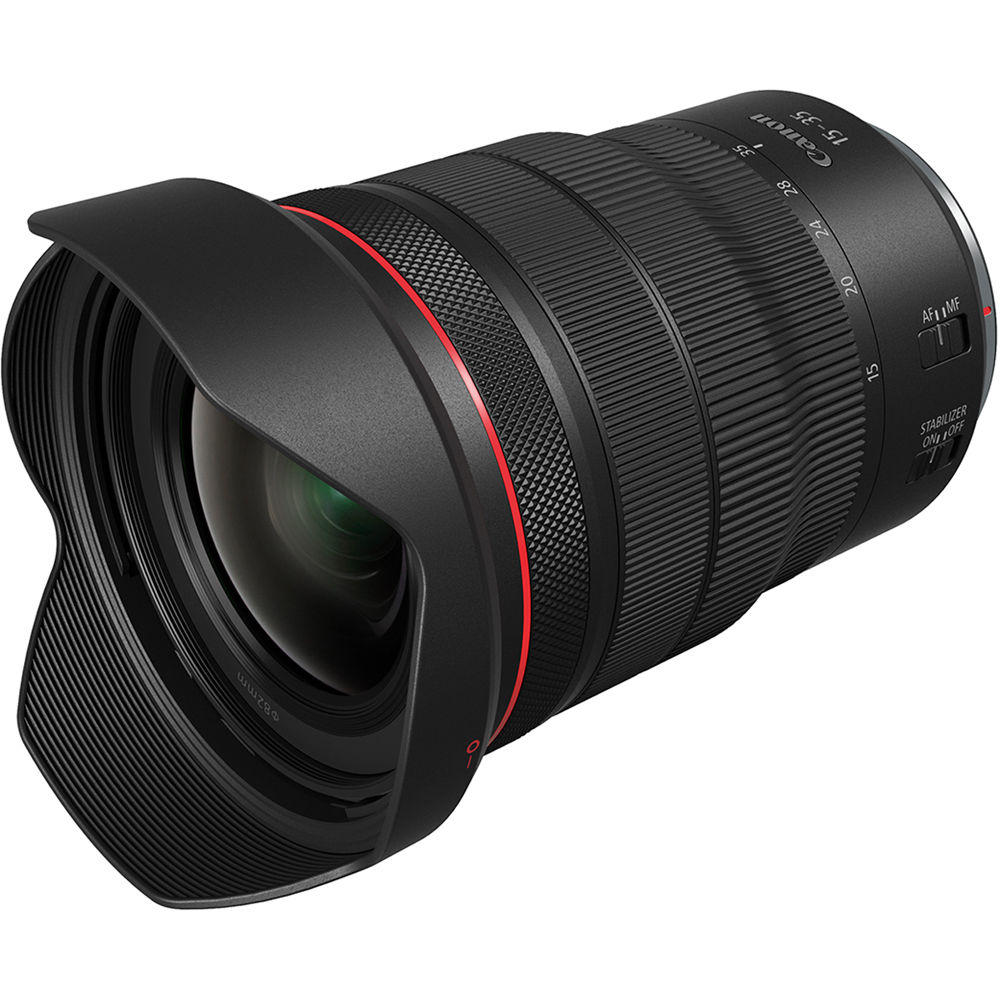
Weather resistance
Canon claims that all RF lenses are weather sealed. But again this only holds true if the camera body you will be using is also weather sealed. No camera is truly and officially weather sealed, so the best you can hope for is reliable weather resistance.
Canon L series lenses have performed well in the past, and I’d be surprised if the Canon RF 15-35mm f/2.8L can’t match established standards.
What’s in the box
This is what you get in the box (other than the lens):
- Lens Hood (EW-88F)
- Lens Case (LP-1222)
- Lens Dust Cap RF
- Lens Cap (E-82II)
The hood might be useful for photography, but the shape and design makes it mostly vestigial for video work. Some people like to put it on to protect the front element in case of a fall. The hood takes the impact and shatters, but saves the lens.
Alternatives to the Canon RF 15-35mm f/2.8 IS USM Lens
If you are on the fence about either renting or buying the RF 15-35mm f/2.8 IS USM for your next film or project maybe these lenses will be interesting alternatives:
- Canon EF 16-35mm f/2.8L USM (Amazon, B&H) with an adapter – top class. Use with an adapter, but I really don’t think this is worth it.
- Samyang AF 14mm f/2.8 RF (Amazon, B&H) and Canon RF 35mm f/1.8 IS Macro STM (Amazon, B&H) – if you prefer primes but need the same coverage. Cheaper, and you also get f/1.8 at the 35mm end. You might even squeeze in a 24mm in there for the middle section, and it will still be cheaper. Both lenses have autofocus.
I hope you found this overview of the Canon. RF 15-35mm f/2.8 IS USM (Amazon, B&H) useful. If we have missed out on something, please let us know in the comments below.

